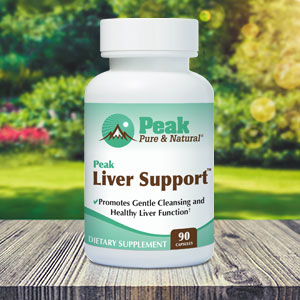Get Easy Health Digest™ in your inbox and don’t miss a thing when you subscribe today. Plus, get the free bonus report, Mother Nature’s Tips, Tricks and Remedies for Cholesterol, Blood Pressure & Blood Sugar as my way of saying welcome to the community!
Study finds a handful of heavy metals clogging major arteries

It seems that these days we just can’t escape the health dangers caused by an environment that we’ve managed to lace with toxins.
From pesticides that cover our yards and our foods to plastics floating in our oceans that we eat with our fish dinner, our bodies are constantly being assaulted.
And what’s truly crazy is that for the most part, we’re told that the levels of all of these things are “safe”. They won’t make us sick right away. And they won’t cause disease down the road.
But should we believe it?
Not likely!
Especially after research done at the Institute for Biomedical Research Hospital Clinic de Valencia INCLIVA in Valencia, Spain, which has shown that the supposedly safe levels of heavy metals around us are actually clogging our arteries.
A spoonful of rice, a drink of water and a side of metal
Clogged arteries are what your doctor would call atherosclerosis.
It’s when fatty deposits, or plaques, build up in your arteries causing them to narrow, weaken and stiffen. As you can imagine, from there things can go downhill fast and you can end up with everything from chest pain to a heart attack, stroke, peripheral artery disease or kidney disease.
Since heavy metals have become ubiquitous in our environment, and because the World Health Organization has stated that 31 percent of the cardiovascular disease burden in the world could be avoided if environmental pollutants were eliminated, Spanish researchers explored the potential role of individual metals and metal mixtures on the development of atherosclerosis.
The team evaluated 1,873 participants, scanning their carotid, femoral and coronary arteries for plaques and comparing the results to urine tests for heavy metals. Toxic metals they looked for included:
- Arsenic – which is found in tobacco and drinking water, but also lurking in foods like rice and fruit juice and is already linked to diabetes
- Cadmium – a metal you can also be exposed to through cigarette smoke and which has been linked to severe flu, pneumonia and possible Covid-19 infections
- Titanium – which is mainly derived from dental and orthopedic implants, screws, pacemaker encasings, cosmetic products and some foods
The team also measured levels of barium, uranium, chromium, antimony, vanadium and tungsten.
And what they found was frightening…
- Older study participants had higher levels of most of the metals measured in the urine
- The few female participants in the study had higher metal levels compared to men, when levels were measured in the urine.
- Adults who had smoked at any time showed higher levels of arsenic, cadmium, chromium and titanium than the people who had never smoked.
- Higher levels of arsenic, cadmium, titanium, and potentially antimony were associated with a higher probability of having subclinical atherosclerosis.
- Arsenic and cadmium appear to be most closely associated with increased plaque levels in the carotid arteries; cadmium and titanium are of greater concern for the femoral arteries; and titanium, and possibly cadmium and antimony, are of more concern for the coronary arteries.
- Arsenic may be more toxic for the arteries when found in combination with cadmium and titanium.
“This study supports that exposure to toxic metals in the environment, even at low levels of exposure, is toxic for cardiovascular health,” said study co-author Maria Tellez-Plaza, M.D., Ph.D.
Clearing out the toxic metals from your life and your body
One other thing the researchers note was also troubling…
Even though they felt that reducing our exposure has the potential to prevent cardiovascular disease and improve the way it’s treated, “Current global environmental, occupational and food safety standards for cadmium, arsenic and other metals may be insufficient to protect the population from metal-related adverse health effects,” said study co-author Maria Tellez-Plaza, M.D., Ph.D., a senior scientist.
So once again, safe just really isn’t so safe. That means you need to take responsibility for decreasing your exposure to these heavy metals as much as possible.
You may also consider a heavy metal detox.
A heavy metal detox usually involves “chelation.” Chelation comes from a Greek word that means “to claw.” That’s because chelation uses a binding agent to “grab on” to harmful contaminants, including minerals and metals, such as calcium, lead, mercury, cadmium, copper, aluminum and iron, binding to them and sending them out in the wash, so to speak, much in the same way your body gets rid of waste.
Intravenous chelation therapy is typically performed under the guidance of physician in instances such as lead poisoning, and often uses the chelator, ethylenediaminetetraacetic acid, also known as EDTA.
However, EDTA is available in supplement form and there are other natural chelators you have access to, including:
- Dietary fiber — found to reduce mercury levels in the brain and blood.
- Sulphur-containing foods — like garlic and broccoli are reported to chelate cadmium.
- Glutathione — the body’s master antioxidant and detoxifier helps protect cells from the oxidative damage heavy metals can cause.
- Modified citrus pectin — and substances from brown seaweeds have lowered heavy metal toxicity by about 74 percent in human participants.
Editor’s note: Have you heard of EDTA chelation therapy? It was developed originally to remove lead and other contaminants, including heavy metals, from the body. Its uses now run the gamut from varicose veins to circulation. Click here to discover Chelation: Natural Miracle for Protecting Your Heart and Enhancing Your Health!
Sources:
Exposure to toxic metals may increase risk of clogged arteries – EurekAlert!














